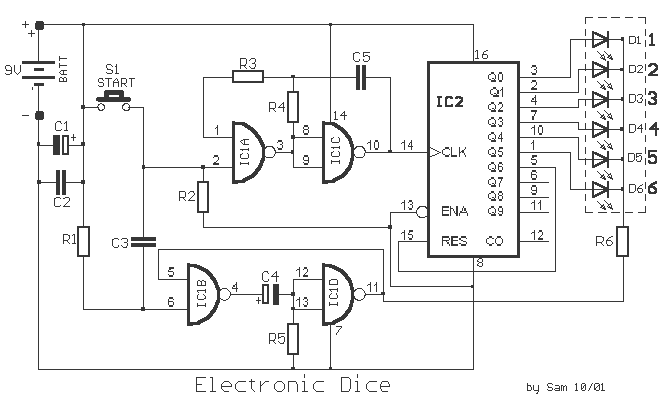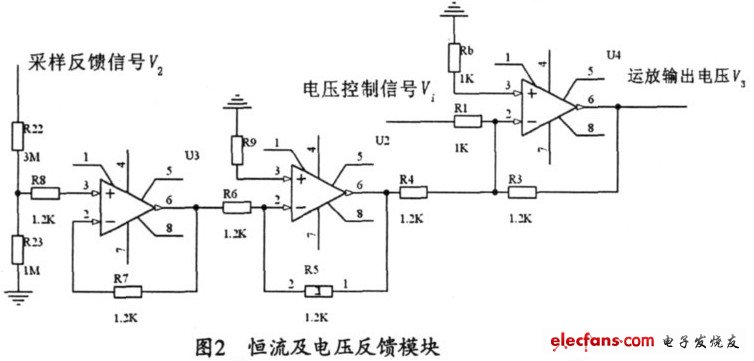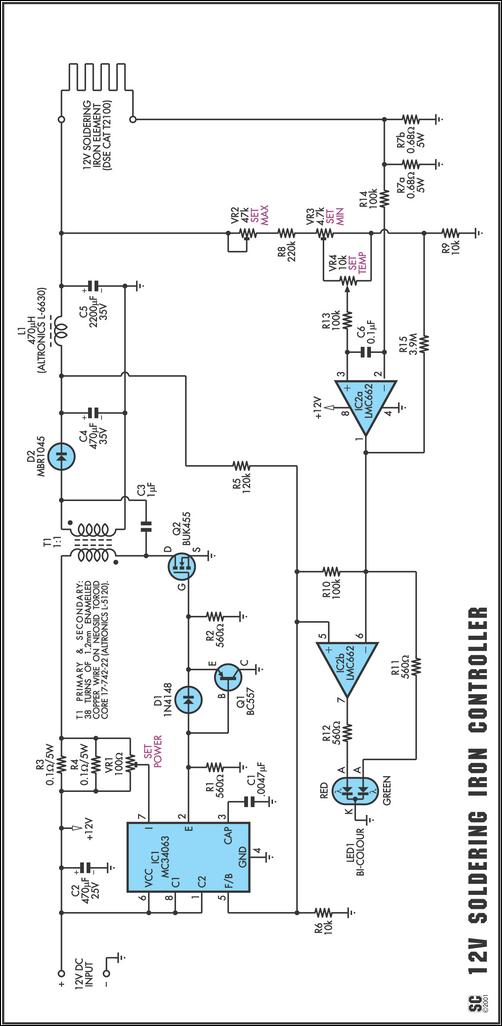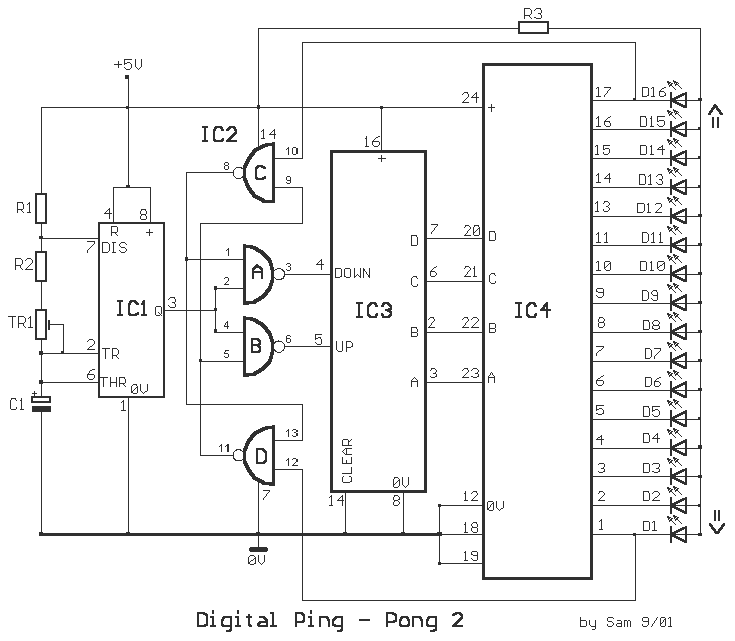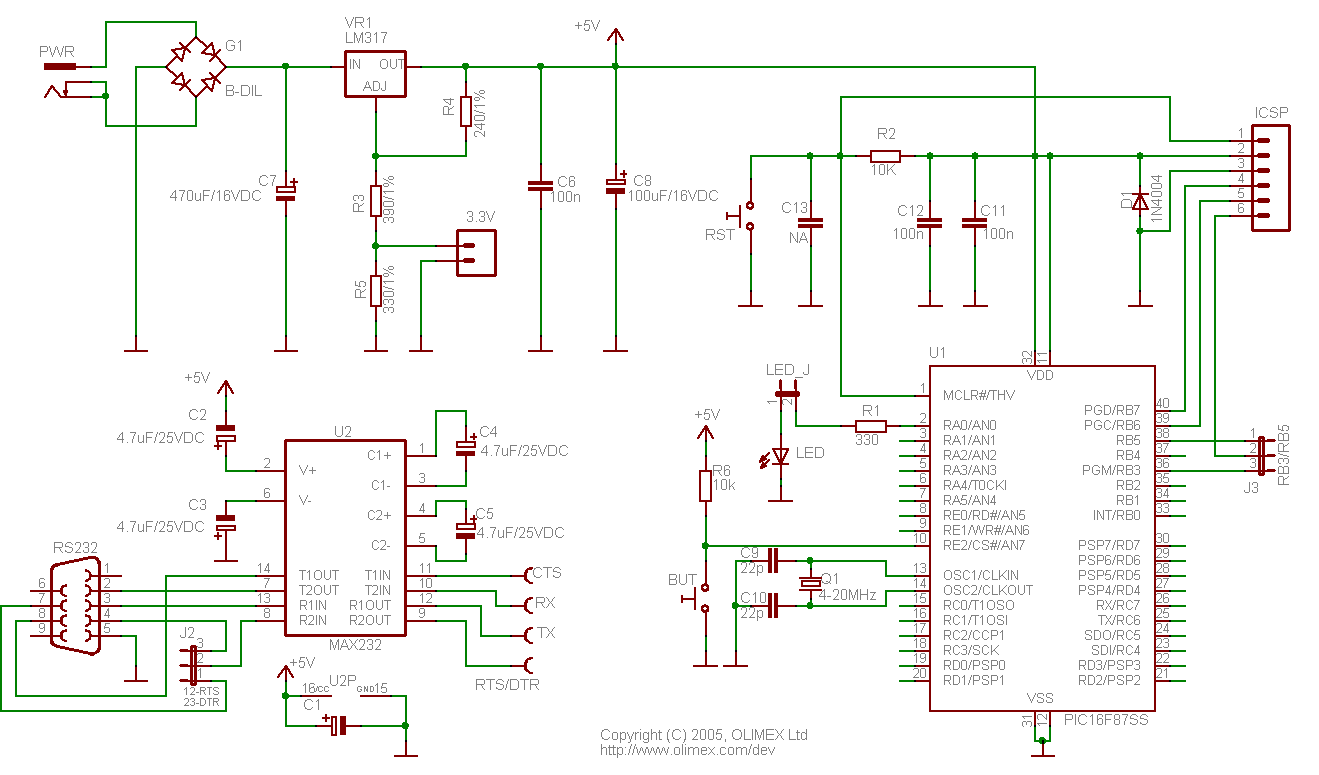
communication Multiplex data and LED pin
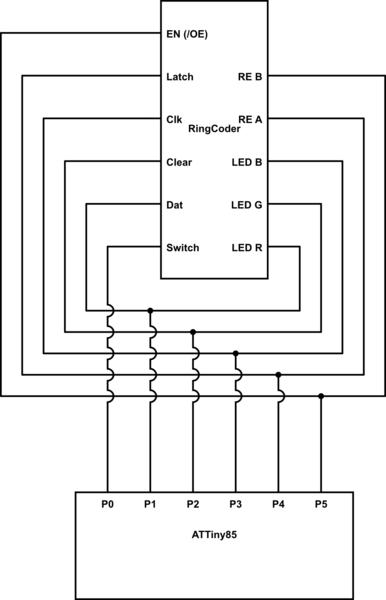
A chip conversion is being performed for the Sparkfun LED RingCoder. The sample code provided with the product functions effectively on an Arduino UNO, utilizing a separate pin for each input/output—specifically, five pins for the shift registers and six pins for the RGB rotary encoder. The objective is to implement a 6 I/O ATtiny85 microcontroller instead of the larger Arduino UNO. This requires the reuse of five out of the six available pins and the implementation of a finite state machine (FSM) to manage the states. It is noted that the three RGB LEDs will need to share a line with the shift register's data, latch, and clock signals. The choice of the ATtiny85 is motivated by the significant differences between the ATmega328 and the ATtiny85. It has been identified that the /OE pin shares a connection with Rotary Encoder B, which presents a potential issue; it is suggested that the /OE pin would be more appropriately shared with the switch.
The circuit design will incorporate the ATtiny85 microcontroller, which features six general-purpose I/O pins, making it suitable for this application. The five pins dedicated to the shift registers will need to be configured to handle data, latch, and clock signals, while the sixth pin will be utilized for the RGB rotary encoder. A finite state machine will be implemented in the firmware to effectively manage the transitions between different operational states, allowing for efficient control of the RGB LEDs and the rotary encoder.
To accommodate the shared line for the RGB LEDs and the shift register signals, a multiplexing approach may be employed. This could involve using a transistor or a logic gate to switch between the RGB LED control and the shift register communication based on the current state of the FSM. The design must ensure that the timing of the signals is managed correctly to prevent conflicts between the shift register operations and the RGB LED control.
Furthermore, attention must be given to the pin assignments, especially regarding the shared /OE pin. It is advisable to reassign this pin to work with the switch instead of the rotary encoder to avoid any operational conflicts. This may require a redesign of the encoder interface to ensure that it can still function correctly without interfering with the essential operations of the shift registers.
Overall, the circuit schematic will depict the ATtiny85, the shift registers, the RGB LEDs, and the rotary encoder, along with any necessary components such as resistors, capacitors, and transistors to facilitate proper operation and signal integrity. The design will be optimized for space and efficiency, taking full advantage of the capabilities of the ATtiny85 while maintaining functionality equivalent to that of the Arduino UNO implementation.Performing a chip conversion for the Sparkfun LED RingCoder. The sample code provided with the product works well on an Arduino UNO, but it uses a pin for each I/O - 5 pins for the shift registers and 6 pins for the RGB rotary encoder. What I want to do is use a 6 I/O Tiny85 instead of a full-blown UNO. So I would like to re-use 5of the 6 pins available and delegate between FSM states. That said, it looks like the three RGB LEDs will have to share a line with the shift register data/latch/clk etc. Why an ATtiny85 There is so much in between an ATmega328 an an ATtiny85. Can you extend your circuit diagram with what your idea would look like jippie May 11 `13 at 15:33 I just realized that /OE shares with Rotary Encoder B, clearly a problem. /OE would probably work better sharing with Switch. npc May 11 `13 at 16:07 🔗 External reference
The circuit design will incorporate the ATtiny85 microcontroller, which features six general-purpose I/O pins, making it suitable for this application. The five pins dedicated to the shift registers will need to be configured to handle data, latch, and clock signals, while the sixth pin will be utilized for the RGB rotary encoder. A finite state machine will be implemented in the firmware to effectively manage the transitions between different operational states, allowing for efficient control of the RGB LEDs and the rotary encoder.
To accommodate the shared line for the RGB LEDs and the shift register signals, a multiplexing approach may be employed. This could involve using a transistor or a logic gate to switch between the RGB LED control and the shift register communication based on the current state of the FSM. The design must ensure that the timing of the signals is managed correctly to prevent conflicts between the shift register operations and the RGB LED control.
Furthermore, attention must be given to the pin assignments, especially regarding the shared /OE pin. It is advisable to reassign this pin to work with the switch instead of the rotary encoder to avoid any operational conflicts. This may require a redesign of the encoder interface to ensure that it can still function correctly without interfering with the essential operations of the shift registers.
Overall, the circuit schematic will depict the ATtiny85, the shift registers, the RGB LEDs, and the rotary encoder, along with any necessary components such as resistors, capacitors, and transistors to facilitate proper operation and signal integrity. The design will be optimized for space and efficiency, taking full advantage of the capabilities of the ATtiny85 while maintaining functionality equivalent to that of the Arduino UNO implementation.Performing a chip conversion for the Sparkfun LED RingCoder. The sample code provided with the product works well on an Arduino UNO, but it uses a pin for each I/O - 5 pins for the shift registers and 6 pins for the RGB rotary encoder. What I want to do is use a 6 I/O Tiny85 instead of a full-blown UNO. So I would like to re-use 5of the 6 pins available and delegate between FSM states. That said, it looks like the three RGB LEDs will have to share a line with the shift register data/latch/clk etc. Why an ATtiny85 There is so much in between an ATmega328 an an ATtiny85. Can you extend your circuit diagram with what your idea would look like jippie May 11 `13 at 15:33 I just realized that /OE shares with Rotary Encoder B, clearly a problem. /OE would probably work better sharing with Switch. npc May 11 `13 at 16:07 🔗 External reference
